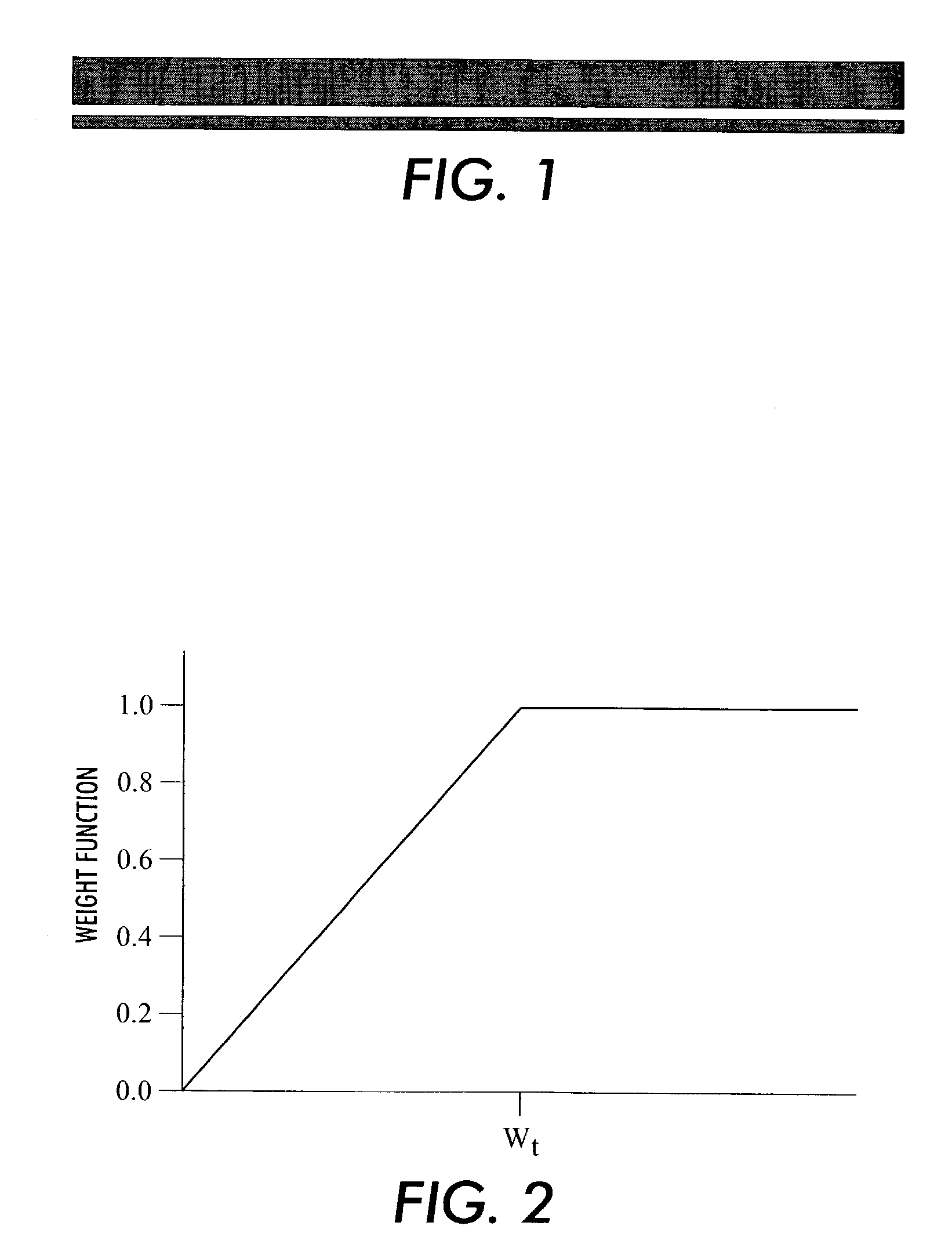Method for smooth trap suppression of small graphical objects
- Summary
- Abstract
- Description
- Claims
- Application Information
AI Technical Summary
Benefits of technology
Problems solved by technology
Method used
Image
Examples
Embodiment Construction
[0016]One aspect of the method for smooth trap suppression of thin objects according to the invention involves determining how much to trap based on the size of the incoming page objects. Consider two different trapping scenarios, a thick and thin red line, as depicted in FIG. 1. In this example, most trap engines will reduce the yellow content at the edges of both objects to produce an optimal misregistration correction, resulting in a magenta-cast trap. If this trap is applied to the thicker line, the edge hue shift is almost imperceptible relative to the body of the line. However, the thin line below it shows a noticeable hue shift along the edge, since in that case the trap comprises a large fraction of the line area.
[0017]Many trapping algorithms completely disable trapping for objects whose dimensions fall below a specified trap width threshold. A drawback to this approach is the return of any misregistration errors that trapping would have reduced. The method of the invention...
PUM
 Login to View More
Login to View More Abstract
Description
Claims
Application Information
 Login to View More
Login to View More - R&D
- Intellectual Property
- Life Sciences
- Materials
- Tech Scout
- Unparalleled Data Quality
- Higher Quality Content
- 60% Fewer Hallucinations
Browse by: Latest US Patents, China's latest patents, Technical Efficacy Thesaurus, Application Domain, Technology Topic, Popular Technical Reports.
© 2025 PatSnap. All rights reserved.Legal|Privacy policy|Modern Slavery Act Transparency Statement|Sitemap|About US| Contact US: help@patsnap.com


